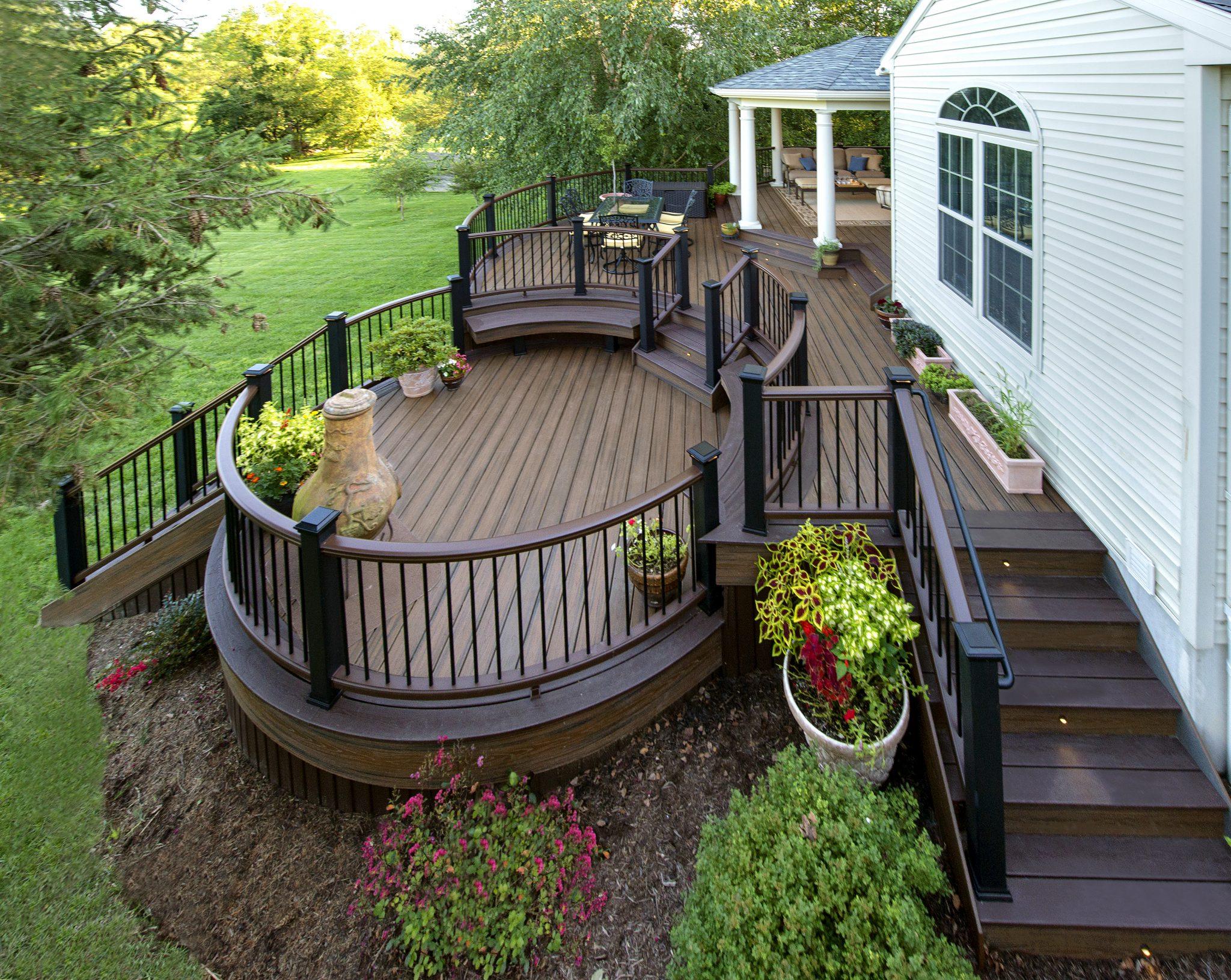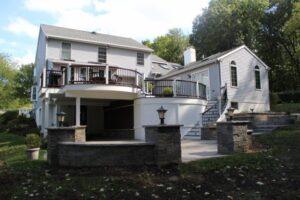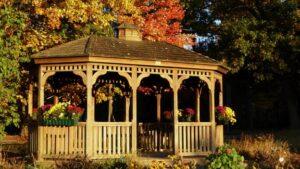There are lots of things to think about when you’re rebuilding a deck or installing one for the first time. The biggest one, and probably the first question you need to answer, is: what are you going to build it out of?
You have two main categories of decking material, which are wood and composites. Both have benefits and drawbacks in terms of upfront cost versus maintenance, but there is arguable a clear winner.
Pressure Treated Lumber
Typically chemically treated southern yellow pine. One of the leading producers of wood preservatives, Arch Treatment Technologies, says that 75% of all new decks are made of pressure treated lumber.
The Pros of Pressure Treated Lumber for Decking
- The chemical treatment helps the wood resist rot, fungus, and bugs or insects.
- PT lumber is the most affordable option. It’s about $0.60 per linear foot for 2 x 6 inch planks or $1.00 for 1 ¼ x 6 in planks.
- It’s also easy to get ahold of as it’s sold pretty much everywhere.
The Cons of Pressured Treated Lumber for Decking
- Compared to other types of wood, PT lumber isn’t very pretty.
- Despite the chemical treatment, it can still crack, split, and warp.
- If you buy the really inexpensive PT wood, it is liable to shrink unevenly and twist when it dries.
- You might be saving costs upfront buy purchasing cheaper PT lumber as opposed to a composite material, but you’ll have yearly expenditures for maintenance. PT lumber needs annual power washing and a fresh application of stain or preservative every 2 or 3 years. As the boards crack and splinter, you might choose to pay to replace those boards depending on how bad they get.
Redwood and Cedar
The Pros of Redwood and Cedar for Decking
- Redwood and Cedar are richer in color with natural beauty that pressure treated lumber lacks.
- The tannins and oils in the wood provide a natural resistance rot, decay, and certain insects or bugs.
The Cons of Redwood and Cedar for Decking
- These types of wood costs roughly 3 times more than PT lumber in most areas of the country. They’re typically cheaper on the west coast, but they’ll still be more expensive than PT wood.
- Prone to cracks and splitting.
- Redwood and Cedar’s resistance to weather and bugs depends on the amount of heartwood versus sapwood in the planks. Heartwood grows toward the center of the tree and his harder and more resistant. Sapwood grows closer to the bark and is softer and less resistant.
- Maintenance for these types of wood is similar to PT lumber. They require annual power washing, and a new coat of finish every 3 to 4 years. If you don’t apply the stain, these types of wood will change to a soft silver gray color. In fact, Cedar has been known to turn gray within 10 years despite re-staining.
Tropical Hardwoods
Often used for decks are ipe (EE-pay), cumaru, tigerwood, massaranduba, garapa, and cambara.
The Pros of Tropical Hardwoods for Decking
- These tropical species offer rich and unique color options.
- They are hard, durable, and naturally resistant to insects and rot.
The Cons of Tropical Hardwoods for Decking
- The density of these woods makes them heavy and difficult to cut and drill. It’s nearly impossible to drive a screw or nail into one of them without first drilling a pilot hole.
- They’re more expensive than PT wood, but comparable to Redwood and Cedar in some parts of the country.
- They also don’t accept stains very well, so you would need to use an oil-based penetrating stain. Not staining the wood will result in the color fading to a soft, silvery gray. As an alternative to a stain, you can apply a clear, UV-blocking preservative every 3 to 4 years.
Composites
Made of wood fibers and recycled plastic, are, in our opinion, the best bang for your buck.
The Pros of Composites for Decking
- The recycled plastic makes it the most resistant to weather, stains, cracks, splits, and rotting compared to any other material. This means that the additional cost and time you’ll have to put in toward yearly maintenance is next to zero – nada.
- Because it’s man-made, manufacturers (such as Trex) produce a large variety of colors.
- Most manufacturers also make handrails, balusters, and other decorative pieces to match the shades they provide.
- Another benefit of this man-made product is that its defect free; you can use every inch to eliminate waste.
The Cons of Composites for Decking
- Composite decking is significantly more expensive up front. BUT when you factor in the time, labor, and expense of maintaining wooden decks over their lifespans on 10 to 15 or 20 years, it’s worth it.




